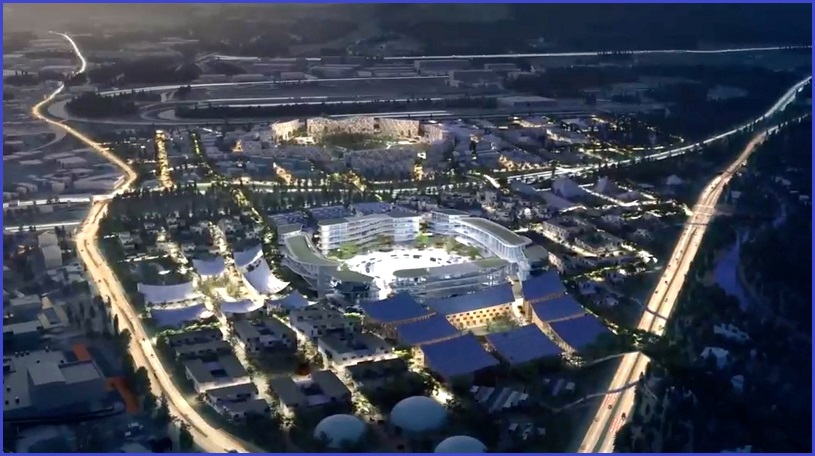Toyota engineers are using a virtual-reality ‘digital twin’ to design a technology-driven future concept city more than five times faster than normal, testing and tweaking new technologies before they are built for real as part of the company’s Woven City project.
The automotive and robotics giant announced its Woven City smart-city project in Japan at the CES 2020 consumer tech conference, and in February broke ground on what it calls “the world’s first programmable city”.
Named to reflect the idea that a city involves many different layers of daily activity, every element has been designed with efficiency in mind.
Pedestrians and self-driving electric vehicles will move over separate dedicated paths, for example, with virtual modelling allowing designers to test different road layouts for optimal efficiency.
“This technology, along with modern AI, is helping us learn and create synthetic data sets that we can use to accelerate and optimise the deployment and design utility of Woven City,” Woven Planet Holdings representative director and CEO Dr James Kuffner said during the recent AWS Innovation Day.
“We’ve accelerated by at least a factor of 5 or 10, the number of iterations that we’ve been able to think about, evaluate and improve upon by utilising and leveraging virtual representations of the city.”
Having emerged from the economic chaos of the 2011 earthquake and Fukushima nuclear disaster, Woven City will be built on a 70-hectare former Toyota factory at the base of Japan’s Mount Fuji.
Intended to showcase the benefits of ubiquitous connectivity, the city will be populated by full-time residents and researchers surrounded by AI-powered technology including IoT sensors, robotic assistants, and connected self-driving vehicles.
The city will be almost completely reliant on renewable energy including rooftop solar panels and hydrogen-powered fuel, which Toyota has been pushing hard in its automotive business.
The virtual city experience
As cloud platforms enable architects and city planners to store and share the virtually unlimited data volumes needed for detailed 3D models, digital twinning has become a powerful tool in speeding the design of built environments.
The same data is accessible from anywhere in the world, allowing collaborators from different disciplines to explore and discuss evolving models.
The City of Melbourne, for example, has been using 3D visualisation to evaluate city planning applications while the NSW government last year launched a digital twin of the state, which overlays a broad range of geospatial data onto an interactive map of the state.
Australian virtual-tour company PHORIA recently tapped digital twins to help real-estate agents like Jellis Craig Stonnington work around COVID lockdown restrictions by showcasing homes in photorealistic detail.
Yet annotating photographs or city maps is a far cry from designing one virtually, from the ground up.
In the past, Kuffner said, “cities often evolved organically, where there may not have been a master plan.”
Digital twinning, he explained, is helping Toyota and its partners design the city in a realistic, interactive virtual space.
“In the same way that Toyota engineers have used computer-aided design tools to dramatically accelerate the number of iterations they could do on an engine or a transmission or a chassis design, we can use the digital twin to do many iterations of different possible layouts and architectural design choices.”
Digital twins are a key driver of advanced manufacturing and Industry 4.0, with a recent report predicting the market for industrial digital twins – which build interactive models of industrial machines for use in training, testing, and operations – will surge by 29 per cent annually through 2030.
“The real transformation is happening now in software,” Kuffner said, “as AI allows robots to leave the structured environments of factories and enter more semi-structured or unstructured environments like logistics hubs, or our homes and offices.”
“We're trying to accelerate the rate of development and optimisation by exploring how we can optimise the layout of the city to have smooth safe mobility of people and goods throughout the city before it's even built”.










